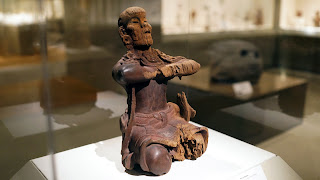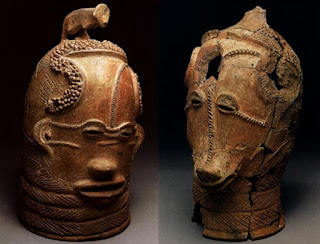Mirror Bearer - Mayan Art

The Maya Galleries in the Metropolitan Museum of Art is home to one of the rarest Mayan figures ever excavated from Mesoamerica. The "Mirror Bearer" is a small figurine crafted from wood and it dates back to the 6th century. This figurine is in incredible condition considering there are not many wooden pieces that have survived the humidity of South America. This wooden figure has drawn a lot of interest because of its posture. The figure is kneeling, with its arms crossed and fists pushed into the chest. This is said to indicate that this person was holding a mirror, specifically pointed at the ruler. When we think mirror, we think flat glass surface but in the case of ancient Mayan civilizations the reflective surface they referred to as mirrors were actually obsidian or pyrite stones fashioned in a mosaic. The mirror holder and mirrors specifically have a large symbolic meaning to the Mayans. Holding a mirror to the king is a way to reflect his divinity and royalty. The...





